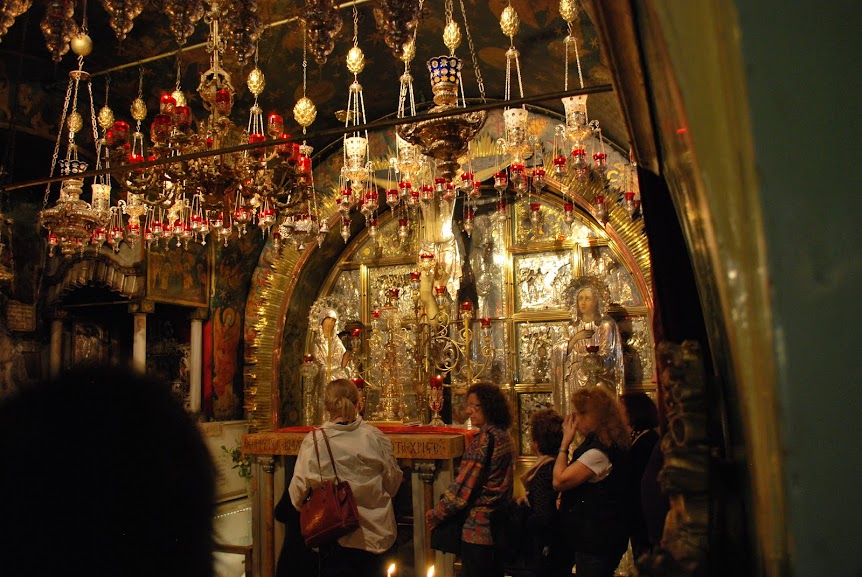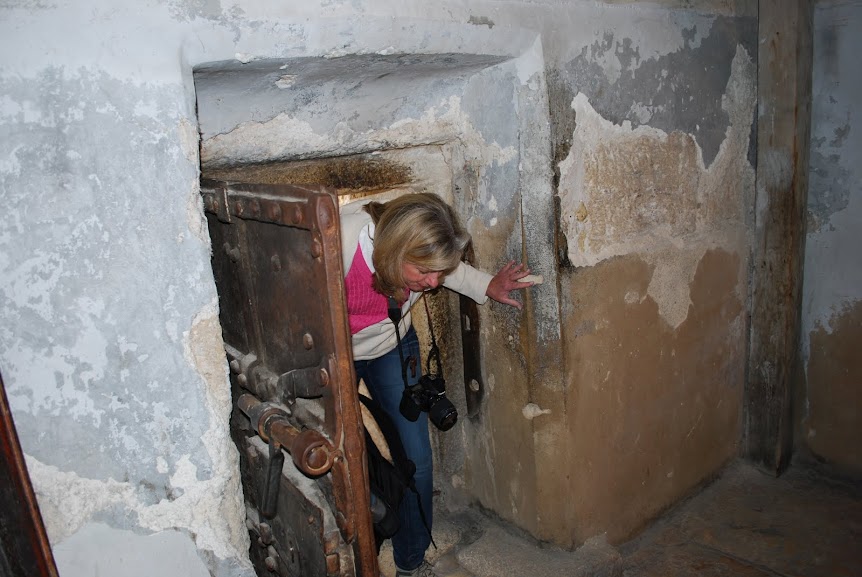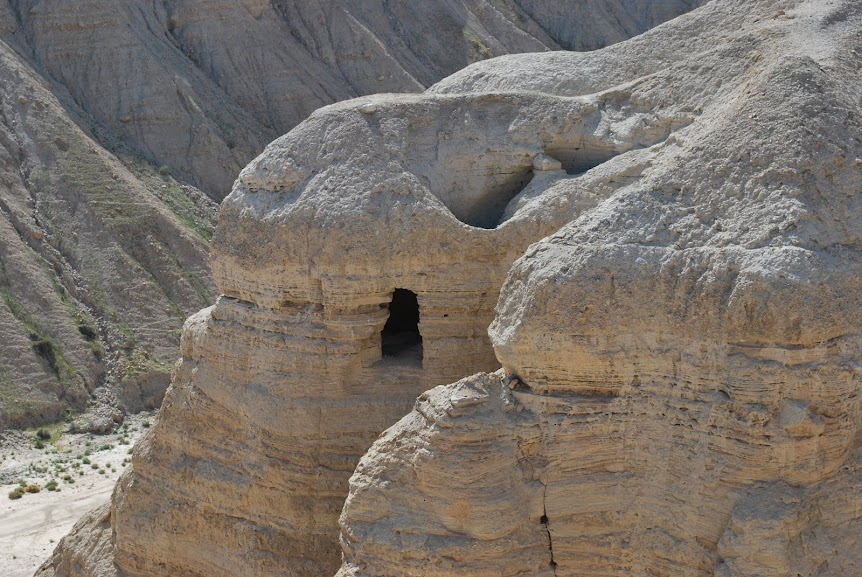The first day in Jerusalem, we loaded up the bus and headed to the Old City in Jerusalem. We arrived shortly after 8:30 am, and headed through a security checkpoint and immediately came to the Western Wall. The wall is on the back side of the Temple Mount, and is the wall closest to where the Holy of Holies was located in the Temple before being destroyed in 70 AD. This is the closest proximity Orthodox Jews get to that holy place - I will explain later. The wall is divided – men and women (3/4 of the wall is for the men). Head covers are required, and if one does not have a hat, skull caps (yarmulkes) are provided. Approaching the wall, I was overcome with emotion – to actually be in this place to pray. As promised, I took a prayer from on of our members, together with my own parchment with prayer, and placed them in the wall. The prayers placed in these cracks are gathered and burned twice a year. I watched the devote Jews who came to pray with books and prayer shawls with their book stands and desks and chairs – how incredible to see the devotion of prayer by these men.

On the women’s side there was one who was offering written prayers for people who might be praying for something special, like one in our group who received a prayer for a husband. We spent about 30 minutes there before we moved on. Out to another line to go through another check point to get to the Temple Mount. No sharp objects, no Bibles, no religious paraphernalia at all. We passed by several police who had riot gear near by just in case something were to come up – but let me say that today was extremely calm, and none of us felt anxious about safety at all.
We headed through security to the Temple Mount to the area around the Dome of the Rock – a holy place for Jews, Christians and Muslims. It is believed that this was where Abraham was prepared to sacrifice Isaac. It is here that the Holy of Holies of the Temple was located. It is believed that Mohammad was taken up to heaven from this point. It is currently under Muslim ownership, but the Israeli police keep it secure. Because the EXACT location of the Holy of Holies is unknown in that place, the devote Jews do not enter, because they are unsure of where they are permitted to go and not go. We were surprised how quiet it was there, and very few people. The dome is beautiful – aluminum with gold added – used to be black until 1966. As one former traveler told me, you will find that almost all your pictures will have that in it when you get home.

We headed over to the Eastern Gate, where the Messiah is to enter, but the Muslims have covered up that gate. I am sure God can make a way! It is the gate Jesus entered on Palm Sunday. We then headed to the Pool of Bethsada where Jesus healed a man, then went to the Church of Saint Anne – the mother of Jesus. A beautiful church – very simple, and GREAT acoustics. We sang “Amazing Grace,” then one of our tour group sang a beautiful song called “Calvary’s Love.” Many of us were moved to tears.
We then started the Way of the Cross (The Via Dolorosa) – beginning with Jesus being condemned to death, then carrying the cross through the busy streets of Jerusalem (a city of 150,000 or so in Jesus’ day, swelling to 500,000 for the Passover). We experienced similar busy marketplace and the hills and steps Jesus endured.

The journey ends at the Church of the Holy Sepulchre, a church shared by many Christian groups. Because of this, very little is ever done to make changes – a ladder sits outside a window of the church, because someone put it there, and no one can agree if and when it should be moved – been there for over 25 years!
Inside the church are the last 4 of 14 steps of the Way of the Cross, from Jesus being nailed to the cross to his resurrection. There is a place believed to be where the cross was raised up, and a place a few yards away that is believed to be his tomb. It is quite a site, with lots of candles and decorations, incense and people.

Many altars, places of veneration and prayer. It is quite moving, even if we are unsure of the exact location, for we come to see and experience what Jesus endured and the great sacrifice Jesus made for us.
Once done there, we went to the market and had Schwerma – chicken in pita bread. Then we did the archaeological branch of our day, beginning with Cardo – a road recreated to look like it did in the 4th Century AD. We then saw remnants of the wall of the city from the time of King Hezekiah (1000 BC), and finally took a tour of an archaeological museum that has been built around a part of the city uncovered from the time of Jesus. The main section of that is a mansion some 5500 square feet with many valuable finds inside, including pottery and mosaics.

We then headed into the Jewish Quarter and saw the new synagogue that was dedicated just last week. We saw a view of the city then that helped us visualize how it all fits together! Pretty neat. At that spot is a giant menorah, built for when the Temple is restored. More artifacts for the new Temple are being made and are on display near where we were.
Finally in the city, we went to the place of where the Upper Room was located. The building is long gone, but the site is considered fairly accurate. Near by, we saw the place considered to be the Tomb of King David. Once again we were segregated – men and women, as we entered there for prayer.
We left the city and drove up to Mount Scopus to view the city from afar – a picture perfect view on a gorgeous day. We drove by some of the government buildings and headed back to the hotel. What a great day it was!

Over dinner, we discussed the lows and highs of the day… outside of some frustration with slower members in our tour who have kept us waiting several times, the day was very positive for all of us. We were all moved by the places of worship and prayer, and the magnitude of Jesus’ suffering and death for us. It really puts in perspective for all of us what is ultimately important in our lives, and how the things that cause us to bicker, disagree, frustrate or burden us are so minimal in comparison. The devotion and dedication we experienced here put me to shame, for I find that my faith is so easily taken for granted. I believe this trip will be a spiritual awakening for my fellow travelers and for me. I hope that one day you can participate as well.
More to come next week about more time in Jerusalem.
IF you are interested in finding out more about the trip I will be leading in Fall 2014, I will be holding two identical information meetings in September. Both of these will be held in the Conference Room at the Far Hills campus of Epiphany Lutheran Church - the dates are:
Wednesday, September 18 at 7 - 8:30 pm.
Sunday, September 22 at 12:30 - 2 pm.
Come and join us!
Peace,
Pastor Charlie





















